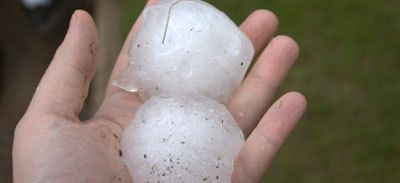How to Select a Contractor For Your Protection
“Reputation - Stability - Workmanship”
General Liability Insurance Certificate - Not "Self-Insured"
You need to know if your contractor carries general general liability insurance for both commercial and residential projects. A sizable contractor will carry no less than $500,000...and usually around $1,000,000 of coverage. If you contractor's insurance policy cannot cover potential damages, then the contractor would be personally liable. If he cannot cover the damages himself, you will again have no legal recourse and will end up paying for the repairs or even a new roof yourself. Over three-fourths of roofing companies do not carry proper insurance coverage to protect you against losses.
Current References
All reputable roofers carry pre-printed lists of references…that includes customers from 1 to 5 years ago. Also, ask for suppliers, business references, etc.
There's Only a Circumstances Where You Should Give Cash Up Front…And Only 2:
Reputable roofing contractors will not need cash up front for 99% of all jobs they do. The only circumstances that would make it necessary are if you special order non-returnable roofing materials, or insurance does not cover your repairs. Be careful of contractors who ask for money up front, especially if your roof is standard wood, composition, or tile shingles. This is the number one area of fraud among contractors.
Trade Association Certificates of Standing
Belonging to trade associations implies some quality and ethical integrity on the part of the contractor. Associations like the Better Business Bureau.
Use Only Certified Installers On Your Roof
You want an experienced roofing crew that knows the manufactures specifications and completes the job in a timely manner.
Compliance to Manufacturer Installation
Guidelines Quality Inspection and Warranties
Insist on a final inspection and the manufacturer and workmanship warranties in writing after the job is completed.
Tips On Working With Your Insurance Company
As soon as you feel your home has incurred damage, you should contact your insurance company's 800 NUMBER, NOT YOUR AGENT to request an inspection.
Your insurance can authorize any temporary repairs necessary to prevent further damage to your property.
The Insurance Claims Process
Contact your insurance company direct if you feel you have a loss.
General Liability Insurance Certificate - Not "Self-Insured"
You need to know if your contractor carries general general liability insurance for both commercial and residential projects. A sizable contractor will carry no less than $500,000...and usually around $1,000,000 of coverage. If you contractor's insurance policy cannot cover potential damages, then the contractor would be personally liable. If he cannot cover the damages himself, you will again have no legal recourse and will end up paying for the repairs or even a new roof yourself. Over three-fourths of roofing companies do not carry proper insurance coverage to protect you against losses.
Current References
All reputable roofers carry pre-printed lists of references…that includes customers from 1 to 5 years ago. Also, ask for suppliers, business references, etc.
There's Only a Circumstances Where You Should Give Cash Up Front…And Only 2:
Reputable roofing contractors will not need cash up front for 99% of all jobs they do. The only circumstances that would make it necessary are if you special order non-returnable roofing materials, or insurance does not cover your repairs. Be careful of contractors who ask for money up front, especially if your roof is standard wood, composition, or tile shingles. This is the number one area of fraud among contractors.
Trade Association Certificates of Standing
Belonging to trade associations implies some quality and ethical integrity on the part of the contractor. Associations like the Better Business Bureau.
Use Only Certified Installers On Your Roof
You want an experienced roofing crew that knows the manufactures specifications and completes the job in a timely manner.
Compliance to Manufacturer Installation
Guidelines Quality Inspection and Warranties
Insist on a final inspection and the manufacturer and workmanship warranties in writing after the job is completed.
Tips On Working With Your Insurance Company
As soon as you feel your home has incurred damage, you should contact your insurance company's 800 NUMBER, NOT YOUR AGENT to request an inspection.
Your insurance can authorize any temporary repairs necessary to prevent further damage to your property.
The Insurance Claims Process
Contact your insurance company direct if you feel you have a loss.

